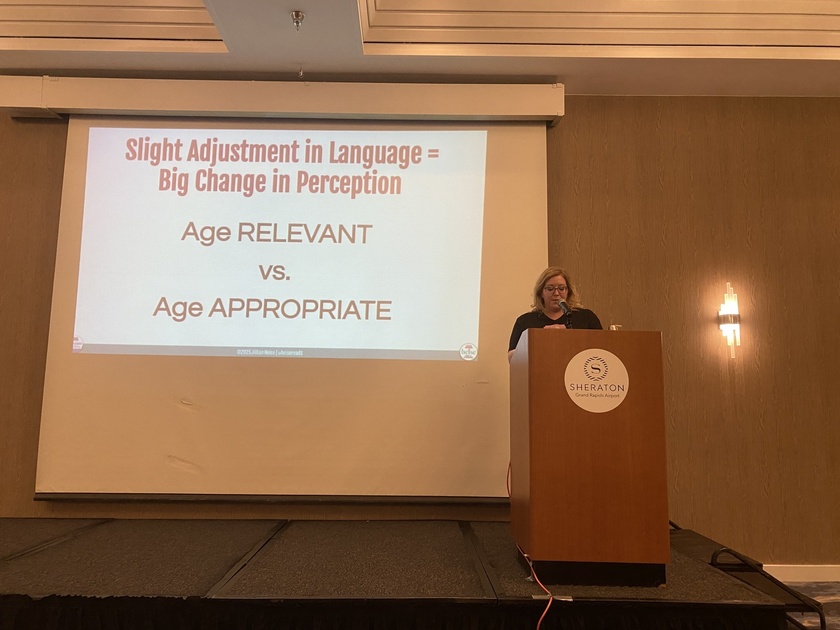Keeping it Real After Hours with Katie & Dave Bondy
The legal battle between the Michigan Department of Natural Resources and the Michigan Duck Rescue and Sanctuary has come to an end. with all charges dismissed against the couple who run the operation.
Matthew and Teresa Lyson, founders of the Salem Township sanctuary, had faced six criminal charges each after state officials accused them of keeping and caring for waterfowl without proper permits. This week, the Washtenaw County Prosecutor’s Office dismissed the cases in their entirety, following months of public scrutiny and growing political pressure.
“This is great news,” Lyson told Keeping It Real. “All charges against me and Teresa are 100 percent gone. It’s a done deal, and we get to start new.”
Background of the Case
The Michigan Duck Rescue and Sanctuary has operated for nearly two decades, caring for injured or abandoned ducks, geese, and other waterfowl — many of which suffer from “angel wing,” a deformity often caused by people feeding them improper food. The Lysons say their work ...
If you are not yet a paid subscriber please become on to support my independent journalism. I would like to ramp things up and posisbly hire some help. If you aren't a paid subscriber click the button below.

Thank you for being here.
Right now, this journalism is just me. No newsroom. No corporate backing.
In 2026, I want to hire help and dig deeper into investigations the media ignores. To do that, I need more paid subscribers.
If you believe independent journalism matters, please consider upgrading. It’s less than $1 a week and you can cancel anytime.


Feds Conduct Door-To-Door Checks At Suspected Minneapolis Fraud Sites
Homeland Security Investigations agents were on the ground in Minneapolis on Monday, conducting door-to-door checks at suspected fraud sites, as authorities examined the alleged involvement of Somali immigrants in a broader criminal scheme.
The Department of Homeland Security posted a video showing two agents entering a convenience store, where they ask the clerk about a suspicious business next door. Last week, independent journalist Nick Shirley posted a 42-minute video allegingthat numerous daycare and learning centers in the Twin Cities area had no children on-site, despite receiving millions of dollars in government funding.
“The American people deserve answers on how their taxpayer money is being used and ARRESTS when abuse is found. Under the leadership of [Secretary Kristi Noem], DHS is working to deliver results,” Homeland Security posted on social media. Click here to read more.

Michigan Election Rocked by AI Deepfakes Targeting GOP Candidate
SAGINAW, Mich. (Michigan News Source) – Michigan’s latest political controversy isn’t about tax policy or crumbling roads – it’s about digital deception. A series of AI-generated deepfake videos recently circulated online falsely portraying a Republican candidate as gay and aligned with a transgender advocacy group, fueling voter confusion and renewed scrutiny in an era increasingly dominated by artificial intelligence. A deepfake is AI-generated media that makes it look or sound like someone said or did something they never actually did.
A now-deleted website and Facebook page were uncovered portraying Saginaw attorney Jason Tunney, a candidate in the 35th Senate District’s February 3 special primary, as gay and backed by a transgender group calling itself “Tranneys for Tunney.” Included were videos showing Tunney kissing another man and speaking in front of pro-LGBTQ+ messaging. Tunney, who is not gay, is married to a woman named Pamela and is a conservative Republican. Click here to read more.

Click here to learn more about Rapid Radios.
‘Just Snapped’: Jan. 6 Pipe Bomb Suspect Brian Cole Jr.’s Confession Revealed in Court Docs
DAILY CALLER NEWS FOUNDATION—Federal prosecutors told a judge that the man suspected of planting pipebombs near the Republican National Committee and Democratic National Committee headquarters in January 2021 confessed to the crime in an affidavit filed Sunday.
The Department of Justice announced Dec. 4 the arrest of Brian Cole Jr. on charges of transporting an explosive device and attempted malicious destruction by means of explosive materials.
In the filing, prosecutors note Cole said he “just snapped” and wanted to punish both political parties, adding he was inspired by The Troubles, a roughly 30-year ethno-nationalist conflict in Northern Ireland.
“The defendant explained that after the 2020 election, ‘when it first seemed like something was wrong’ and ‘stuff started happening,’ he began following the issue closely on YouTube and Reddit and felt ‘bewildered,’” the filing said. Click here to read more. Click here to read more.

The miracle cure for sickle cell is now 2 years old. Most are still waiting.
The Trump administration has a plan to provide access to new treatments for sickle cell disease, the hereditary condition that has meant a lifetime of excruciating pain and debilitating health issues for tens of thousands of mostly Black Americans.
It’s one of few initiatives on which President Donald Trump and the public health establishment are aligned. But for parents desperate for a cure for children with a disease that, besides pain, causes infections, vision problems, delayed puberty and regular visits to the hospital, it doesn’t mean they’ll get the gene therapy treatments anytime soon. Click here to read more.

Trump administration rolls out $50 billion rural health fund
The Centers for Medicare & Medicaid Services announced Monday that it was launching its $50 billion initiative to help rural communities nationwide, which was created through the One Big Beautiful Bill Act in July.
All 50 states will receive monetary assistance that will go to rural areas starting next year, with the first wave of awards ranging from $147 million to $281 million.
The awards are expected to be used to bring more resources to Americans in rural areas, including by expanding preventive, primary, maternal, and behavioral health services; strengthen and sustain the rural clinical workforce; and modernize medical technology in rural areas. Click here to read more.

- Standard minimum wage: increases to $13.73 per hour from $12.48.
- Tipped workers: will see the tipped minimum wage go up to $5.49 per hour (40 percent of the full minimum wage) as long as tips bring them up to at least the full rate.
- Minors (ages 16 and 17): can be paid 85 percent of the minimum wage, rising to $11.67 per hour.
- Training wage: for employees under age 20 in their first 90 calendar days of employment remains unchanged.
















